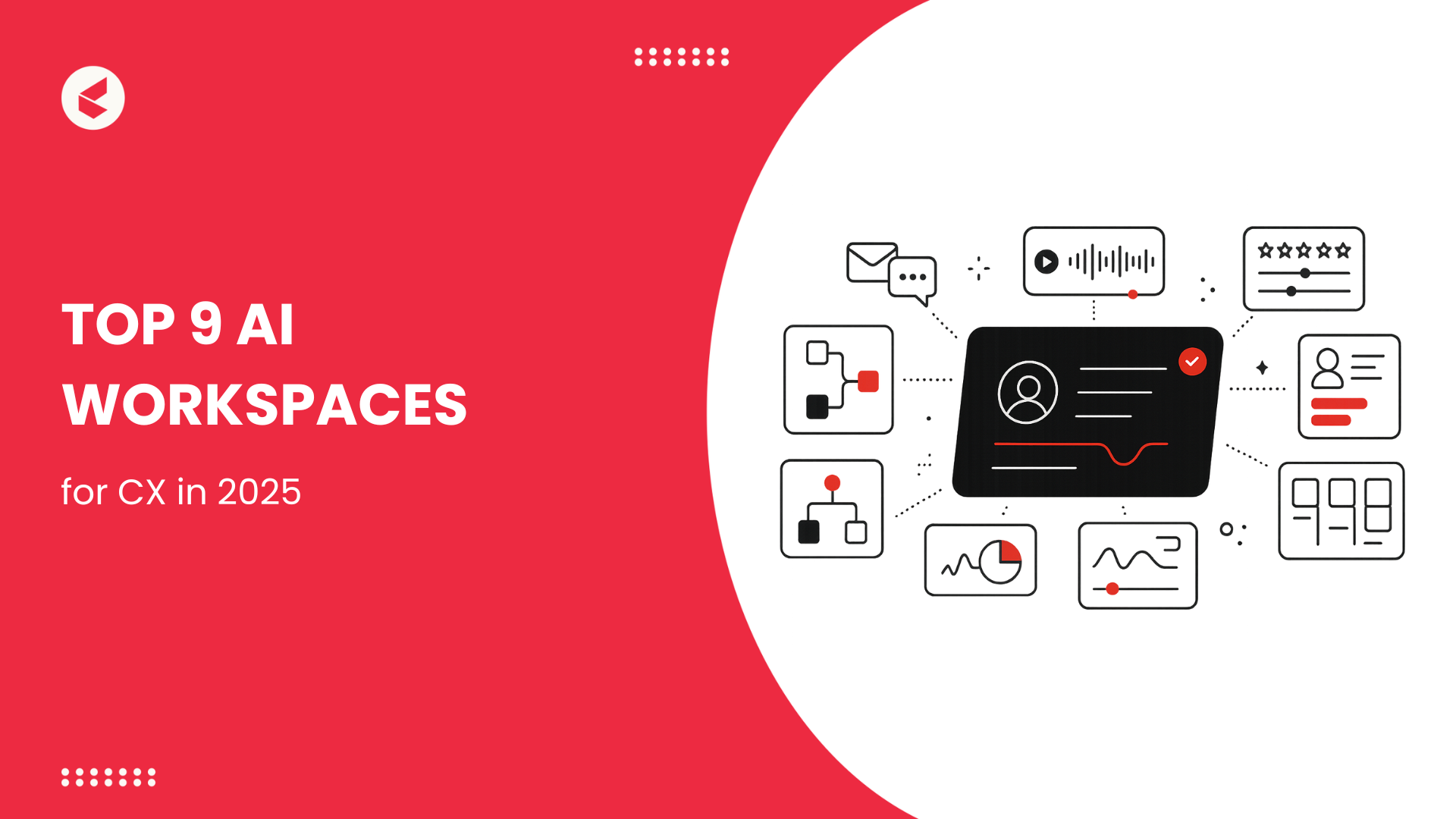When GenAI took over the workspace, prompts quickly became the new creative currency. Writers, designers, coders, and marketers all turned into “prompters,” coaxing models to produce everything from ad copy to digital art.
But as enterprise adoption accelerates, quick, prompt tweaks no longer cut it. In McKinsey’s 2025 State of AI survey, 71% of organizations said they use generative AI in at least one business function.
Customer experience teams now rely on AI to handle entire conversations, surface insights, and even make decisions. And hence, prompt governance has become critical. It is structured oversight that defines what AI says, how it behaves, and how it adapts as business needs change.
Prompt governance pushes organizations to transition from one-off instructions to managed AI communication systems. This way, every response aligns with brand standards, compliance rules, and evolving customer expectations.
In this blog, we will explore how enterprises are transitioning from one-off prompts to managed AI communication systems.
What Is Prompt Governance?
Prompt governance is a systemized framework to manage, audit, and optimize your prompts across the organization. Providing an environment to control how AI communicates in a particular setup. It ensures that the answers provided are right, aligned with the brand, and in conformity with your policy.
It has become increasingly important since standards like ISO 128-44:2001 are making inroads into the AI world. Their adoption has just emerged but signals a shift or formal governance.
The key elements of prompt governance include:
| Key Elements | Short Description | Governance Benefit |
| Prompt libraries with versioning | Stores approved prompts and tracks changes. | Maintains consistency and compliance across all AI-driven interactions. |
| Role-based access | Restricts changes to authorized users only. | Prevents accidental or malicious changes that could harm CX or breach compliance. |
| Output observability | Monitors AI responses for issues. | Allows early detection of errors, preserving trust and regulatory alignment. |
| Feedback and approval workflows | Reviews and validates prompts before launch. | Mitigates risks from unintended outputs and enforces enterprise standards. |
Why Prompt Governance Matters for CX
Only 27% of organizations review all gen AI outputs before use, which exposes CX to avoidable errors and compliance risk. Besides, customer experience is a uniquely sensitive domain. It includes multiple aspects like brand tone, real-time accuracy, multilingual delivery, and sector-specific regulations in every interaction.
So even if AI creates a single misstep, it can cascade into lost trust, customer churn, or compliance exposure.
Unmanaged prompts can lead to:
- Hallucinations and Misinformation: It’s very common for an AI to generate false information with confidence. This can be deadly, especially in the context of customer support, when very real problems and people are involved.
- Inconsistency across Channels and Languages: Discontinuous behavior of AI across your channels can be perceived as creating an injurious effect opposed to your brand. For example, if your AI gives different answers to its customers residing in other regions, it may very well send a message that you are treating your customers differently based on their region.
- Compliance Violations in BFSI, Healthcare, and More: In regulated industries, AI output that skips authentication or shares sensitive data exposes the enterprise to legal risk. This is extremely crucial for industries like finance and healthcare, where customer data is paramount.
How Governance Turns Risk into Reliability
The issues mentioned above, i.e., misinformation, inconsistency, and compliance breaches, are not inevitable outcomes of AI in customer experience. They’re the result of unmanaged systems. Prompt governance creates the oversight and structure that transform AI from a potential liability into a dependable operational asset. It helps you:
1. Enforce Brand And Legal Guardrails
Governance frameworks embed pre-approved language, tone, and compliance rules directly into prompts. For example, a financial services bot can be constrained to use only regulatory-approved phrasing when explaining investment risks to a potential customer.
2. Enable Traceable, Auditable Responses
If your systems follow prompt governance guidelines, all your AI interactions would be logged and linked to the prompt logic that generated them. This would allow your teams to review it later and understand whether it aligns with the company policy.
3. Support Safe Iteration Across Teams
Prompt changes undergo structured testing and review before deployment. This is to ensure that updates enhance accuracy and efficiency without creating new vulnerabilities. A multinational CX team, for instance, can roll out an improved escalation workflow knowing it’s already been stress-tested for edge cases in all supported languages.
Also Read – The Prompt Whisperers: How Prompt Engineering is Evolving Customer Support
The Rise of PromptOps
Prompt governance becomes operational through PromptOps—it’s the emerging discipline of managing prompts as living assets throughout their lifecycle. For CX leaders, this means transforming governance principles into repeatable processes that scale effectively without compromising control.
Some of the core practices of promptOps include:
| Practice | What It Is | How It Runs Day-To-Day |
| Prompt lineage and provenance | A full trace from output back to prompt version, model, data, tools, and policy. | Log a unique trace for every interaction and keep immutable, timestamped records with redaction where required. |
| Risk-tiered release gates | Risk classes that dictate review depth, canaries, and rollback windows. | Submit change with risk tag, collect required approvers, ramp traffic, and auto-rollback on threshold breach. |
| Drift and anomaly detection tied to SLOs | Continuous checks for tone, compliance phrasing, and resolution patterns versus baselines. | Maintain baselines and alert on CSAT drops, complaint spikes, refusal rate, and policy mismatch. |
| Incident response for prompts | Treat prompt defects like incidents with runbooks and flags. | Use feature flags, scoped rollback, postmortems, and blast-radius controls during fixes. |
| Prompt debt management | Systematic removal of duplicates and stale variants. | Keep an inventory, set age thresholds, and schedule quarterly cleanups and merges. |
| Token, latency, and cost budgets | Hard budgets per prompt family for spending and performance. | Enforce token caps and latency targets, choose models by budget, and auto-downgrade when needed. |
| Policy-bound prompt contracts | Explicit links from prompts to policy clauses with expiry dates. | Map prompts to policies, trigger re-review on policy updates, and track SLA to approve. |
| Human-shareable rationale | Plain-language intent, guardrails, and edge cases are attached to each prompt. | Require rationale on creation, surface it in the agent UI, and reuse it in training and reviews. |
Kapture CX’s Role in Enterprise Prompt Governance
Prompt governance only works if it’s operationalized, and that’s where Kapture CX steps in. Kapture is designed for enterprises managing high-volume, high-stakes customer interactions. It provides the infrastructure to apply governance consistently across AI-driven channels. With Kapture, you get:
1. Unified Prompt Orchestration Across Chat, Voice, and Co-pilot Agents
Instead of maintaining separate prompt logic for each channel, Kapture centralizes orchestration. This ensures that a banking customer calling the voice line and another using live chat both receive the same policy-aligned, brand-consistent answers.
2. Observability Dashboards for Output Quality and Tone Alignment
CX leaders gain a real-time view of what the AI is saying, how it’s being received, and whether it aligns with brand tone and compliance requirements. For a retail chain, this means quickly catching if a seasonal promotion prompt is being misapplied in certain regions.
3. Version Control and Rollback for Safe Experimentation
Every change to a prompt is tracked, tested, and reversible. A travel company trialing a new itinerary recommendation script can roll it back instantly if it impacts booking conversions or compliance in regulated markets.
4. Governance-Ready Architecture Aligned with Standards Like ISO 128-44:2001
Kapture’s architecture is built to integrate governance frameworks from day one. This makes it easier to adapt to evolving regulatory demands around AI reliability and auditability.
By combining orchestration, observability, and compliance-focused architecture, Kapture functions as more than a point solution. It is an AI agent platform purpose-built to deliver a responsible customer experience, turning governance principles into a measurable operational advantage.
Operationalize AI Trust at Scale with Kapture CX
For enterprise CX, you need to deliver to your customers through context-aware engagement consistently. Only then can you gain their trust and loyalty—it happens over time.
It requires more than good intentions; it demands infrastructure that can keep up with changing customer needs, new regulations, and rapid market shifts. By treating prompts as dynamic business assets and giving them the same rigor as any other mission-critical system, you can position yourself to scale AI responsibly while staying competitive.
With Kapture, you can turn that philosophy into reality—it centralizes control, monitors quality in real time, and adapts without losing alignment. It’s the difference between hoping your AI behaves and knowing it will.
Start governing your AI with Kapture today, and deliver CX your customers can trust—Sign up for a free demo now!













